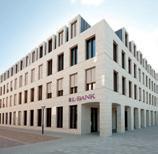
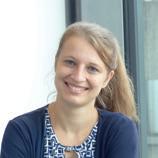
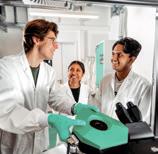














Heidelberg and the Rhine-Neckar region stand among Europe’s most vibrant life science ecosystems. As a Center of Excellence for Oncology, Immunology, Neuroscience, Imaging, Omics and Synthetic Biology, our region unites worldleading research institutions, global industry players, and a growing community of ambitious start-ups. Here, cutting-edge science meets entrepreneurial spirit –creating fertile ground for innovations that improve lives and redefine healthcare.
Our region’s strength lies in this unique concentration of excellence and its culture of collaboration across disciplines and institutions. It is precisely this spirit of partnership and innovation that we celebrate and cultivate – and it will take center stage at life – the biomedical convention 2026.
On 4 February 2026, life will once again transform Heidelberg into the meeting point for scientists, innovators, and industry leaders from across Europe. The convention brings together those who push the boundaries of biomedical research and translate discovery into impact.
The 2026 programme will highlight two thematic tracks that reflect the essence of our ecosystem:
“Synthetic Biology for Life” will spotlight a field in which Heidelberg holds true excellence – exemplified by the new Excellence Cluster SynthImmune, where researchers decode and reconstruct elite immune functions from molecular building blocks to create prototypes of next-generation therapies.
The second track, “Regional Innovations”, will showcase the translational power of our network – from pioneering basic research to clinical and industrial applications. Together, these themes illustrate the diversity, creativity, and strength of our cluster – and why Heidelberg is the place to be when it comes to shaping the future of life sciences. Join us at life 2026 and be part of the community that brings new ideas to life.

Julia Schaft, Managing Director, bioRN Life Science Cluster

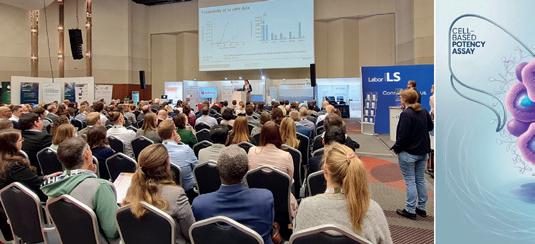
THE REGION Heidelberg and the Rhine-Neckar region are shaping a leading global life science hub. With bioRN connecting world-class research, start-ups, and pharma, dense networks and strong partnerships turn discoveries into practical solutions that advance health innovation.
› Stephanie Füller, PR Manager bioRN Life Science Cluster
A glance at the region’s key figures quickly shows why Heidelberg and the Rhine-Neckar metropolitan region have become a hotspot for innovation. The region is rapidly establishing itself as one of the world’s leading life science centers. The driving force behind this success is the close collaboration between academia, industry, and government. bioRN – Life Science Cluster – serves as the central interface between these stakeholders, accelerating translation within the region’s ecosystem to deliver impactful health innovations.
Heidelberg is home to a high concentration of world-class institutions: the German Cancer Research Center (DKFZ), EMBL, Heidelberg University and over 15 other specialised research institutes. More than 14,000 researchers publish around 17,500 publications annually. The region has produced 45 Nobel Prize winners, and several of Germany’s most cited oncology investigators are based here. Research focuses on oncology, immunology, neurosciences, imaging, omics, synthetic biology and medical technology. Programmes that integrate AI-supported tumour mapping and precision medicine are rapidly moving from discovery to clinical application.
More than 1,200 life science companies operate in the region, employing around 70,000 skilled workers and generating annual sales of €20bn. Seven of the world’s twenty largest pharma-
ceutical companies maintain research and development centres here, often in close cooperation with SMEs. This combination of global corporations and agile local companies enables effective technology transfer and seamless collaboration between science and industry.
Heidelberg is also developing into a start-up city in the life sciences sector. Companies such as Veraxa Biotech, which is currently preparing for an IPO, are examples of the region’s innovation potential. Pioneering incubators such as BioLabs Heidelberg provide stateof-the-art infrastructure and community support for early-stage start-ups, enabling them to scale quickly. Complementing this, BioMed X operates as a unique innovation platform where academic talent and industry partners collaborate in dedicated research programmes, bridging the gap between
frontier science and commercial application.
A cornerstone of the ecosystem is the interplay of bioRN with the Health + Life Science Alliance, linking science and industry to accelerate technology transfer and support start-ups. Strong backing from the state of Baden-Württemberg highlights the region’s long-term growth and strategic importance.
For collaboration or soft-landing support, contact bioRN. Our team provides insights, explores partnership opportunities, and connects you with key research and industry players.
bioRN Network e.V.
Im Neuenheimer Feld 584 69120 Heidelberg, Germany
T: +49 159 01845192
W: www.biorn.org
E: info@biorn.org

EXCELLENCE CLUSTER At life – the biomedical convention taking place 4 February 2026 in Heidelberg, bioRN once again brings together international experts from academia, industry, and start-ups. One highlight will be the Synthetic Biology track, chaired by Prof. Kerstin Göpfrich, Heidelberg University Center for Molecular Biology of Heidelberg University (ZMBH).
life_Professor Göpfrich, you are the Track Chair for “Synthetic Biology” at life 2026. What can participants expect from this track?
Kerstin Göpfrich _We want to demonstrate how far synthetic biology has come today and what disruptive power it holds for medicine and biotechnology. Leading researchers and start-ups will present new tools, concepts, and applications – from DNA/RNA nanostructures and artificial cells to novel approaches in immunotherapy. The goal is to bring the community together and inspire collaborations.
life_A current lighthouse project in Heidelberg is the Excellence Cluster SynthImmune, which you lead together with Oliver T. Fackler and Michael Platten. What is the vision of this cluster?
Kerstin Göpfrich _With SynthImmune, our aim is to understand how the immune system operates at its very best –and to synthetically reconstruct these “elite functions.” Unlike traditional “topdown” approaches such as CAR-T cells, we focus on bottom-up synthetic biology, building immune functions from molecular components. This allows us to create new prototypes for immunotherapies against AIDS, malaria, and aggressive tumours.
life_How do you approach this concretely?
Kerstin Göpfrich_We combine methods from nanotechnology, molecular biology, and AI. For example, DNA and RNA origami to specifically activate immune cells, or microphysiological models that

PROF. DR. KERSTIN GÖPFRICH
Center for Molecular Biology Heidelberg University (ZMBH) Biophysical Engineering of Life Group
establishing bottom-up synthetic immunology as a new research field with its home in Heidelberg, strengthening Heidelberg’s international visibility in a field of growing global importance. And third, thanks to the close links with hospitals, start-ups, and pharma companies, we open real opportunities for translation and innovation. SynthImmune will attract talent, foster spin-offs, and further position the Rhine-Neckar region as a leading European life science hub.
life_What are you personally most looking forward to at life 2026?
Kerstin Göpfrich_The direct exchange! life brings together the entire community – academia, start-ups, and industry. Especially in a dynamic field like synthetic biology, it is essential to foster collaboration across disciplines. I am excited about the discussions, the impulses, and perhaps the next collaborations that will be sparked here. ■ realistically mimic the human body in the lab. We are also designing synthetic effector cells with tailor-made functions. Our goal is to build translational platforms that pave the way toward clinical application.
life_What impact will SynthImmune have on the Rhine-Neckar life science ecosystem?
Kerstin Göpfrich_The impact will be tremendous. First, we are creating new research infrastructures that benefit both scientists and companies in the region –from high-tech laboratories to AI-based data analysis platforms. Second, we are
Prof. Kerstin Göpfrich is co-speaker of the newly established Excellence Cluster SynthImmune which is focussing on the opportunities of synthetic immunology. In May 2025, the Excellence Strategy Initiative of the German federal and state governments selected 70 Clusters of Excellence which will receive total funding of €539m per year for seven years starting on 1 February 2026.
NEW INVESTOR SUPPORT
InnoGrowth BW addresses critical financing gaps in capitalintensive fields. By combining private and public investment, it enables larger funding rounds. The programme strengthens Baden-Württemberg’s investor landscape and fosters international competitiveness.
› Pia-Sophia Kößler, Investment Management L-Bank
With InnoGrowth BW, Baden-Württemberg has launched a programme aimed at closing a critical financing gap – especially in capital-intensive fields with long development cycles such as life sciences and medtech. The programme is open to both start-ups and SMEs with innovative business models. By combining private investment with public risk-sharing, it creates the leverage required for larger financing rounds.
The programme forms part of the national RegioInnoGrowth initiative and draws on resources from the federal Zukunftsfonds. These are disbursed via the KfW, complemented by state funds and private capital. Typically, 50% of a financing round can be refinanced through L-Bank, and in special cases up to 70%. With currently available funds, a total financing volume up to €100m can be mobilised for companies in Baden-Württemberg.
By September 2025, 36 financing rounds had been completed across 31 companies, mobilising a total of €41.5m in financing, including around €16,5m in private capital.
So far, six of these financings have gone to the healthcare sector, two of
which went to start-ups from the RhineNeckar life science region:
■ Umlaut.bio GmbH (Heidelberg): A biotech company focused on developing first-in-biology therapies targeting tRNA modifications to treat cancer and autoimmune diseases.
■ WMT AG (Heidelberg): Develops novel therapeutics targeting metabolism and metabolic pathways.
■ Eversion Technologies GmbH (Konstanz): develops sensor-based insoles and a digital gait analysis platform.
■ LICIT Solutions GmbH (Tübingen): Develops innovative active substances for preservation and disinfection in cosmetics, hygiene, and industrial applications.
■ Fysor GmbH (Tübingen): Develops a gamified digital training system called Apelvo for pelvic floor training.
■ Change IT Solutions GmbH (Freiburg): IT solutions for administration and patient care in hospitals.
Investors include LBBW VC, Marathon Beteiligungs AG and regional savings bank investment companies from Freiburg and Biberach as well as a Business Angel (BTRON GmbH). Anoth-
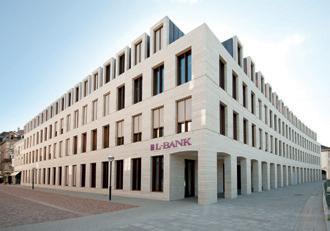
er well-known accredited healthcare investor is MBG Baden-Württemberg.
Financing can be completed within four weeks if an accredited investor is already involved. For first-time financings, a new, independent investor is required to ensure equal conditions between public and private capital. Early coordination with L-Bank is recommended when accreditation is required. A growing investor base thus creates a supportive network for the health sector in BW.
The programme is open to all innovative business models, regardless of sector and stage. Investors from across Germany and beyond are welcome, provided they maintain a regular investment focus in Baden-Württemberg, making the review process worthwhile.
Demand is rising. Applications are open until mid-2026, with an extension to 2027 and additional funding being discussed.
InnoGrowth BW broadens and professionalises the investor landscape while securing financing for capital-intensive companies. For Baden-Württemberg, the programme serves as a lever with international impact.
More information and a list of accredited investors:
www.l-bank.de/innogrowth-bw ■
BRIDGING INNOVATIONI BioMed X is a leading innovation hub for pharma, providing fertile ground for high-risk, high-reward biomedical research. With sites in Heidelberg and New Haven, and satellite incubators embedded directly within pharma R&D environments, BioMed X creates a collaborative space where top talents from academia and industry work side by side.
› Dr. Christian Tidona, CEO, BioMed X
Since its start in 2013 on the campus of the University of Heidelberg, BioMed X has been pushing the boundaries of biomedical innovation by bridging the gap between academia and industry. The company’s unique model combines global crowdsourcing with local incubation of the brightest ideas and talents to tackle some of the toughest challenges in biomedicine.
The most recent milestone is the creation of XFem Labs, a Women’s Health Research & Development Accelerator based at BioMed X’s Heidelberg headquarters. Supported by Gates Foundation, the accelerator aims to pioneer innovative solutions to address critical gaps in earlystage research and translate discoveries into scalable solutions for women worldwide, with a particular focus on low- and middle-income countries (LMICs).
The first project at the new XFem Labs accelerator in Heidelberg is entitled “New Strategies for Female-Controlled NonHormonal Contraception” .
In parallel, BioMed X has expanded its global presence with new partnerships. In collaboration with the Government of Barbados and with the support of the European Commission, the institute is launching BioMed X Barbados, a new incubator focused on cardiometabolic diseases in individuals of African descent.
The new initiative, endorsed by European Commission President Ursula von der Leyen and Barbadian Prime Minister Mia Amor Mottley, reflects BioMed X’s commitment to equity in global health.
At the same time, the XSeed Labs concept – open innovation incubators embedded within pharma R&D campuses – continues to grow. After a successful launch in 2024 with Boehringer Ingelheim in Ridgefield, Connecticut, the second XSeed Labs incubator will open at Servier’s research and development site in Paris-Saclay in 2026, expanding this unique open-innovation model from the USA to Europe. What makes BioMed X stand out is not only its ability to gener-
ate new ideas but also its track record of translating them into tangible impact. More than 20 projects have been completed so far, with numerous success stories ranging from novel drug discovery platforms to new therapeutic concepts that have been integrated into pharma pipelines.
Looking ahead, BioMed X remains committed to pushing the boundaries of biomedical innovation. By combining the creativity of academic scientific talent, the know-how of experienced mentors, and the support of global partners, BioMed X continues to demonstrate how disruptive ideas can be transformed into solutions that matter – for patients and healthcare systems world-wide. ■

Signing ceremony of the Letter of Intent between BioMed X and the Government of Barbados. From left to right standing: Simone Rudder, Barbados’ Ambassador to the European Union, Dr. Ursula von der Leyen, President of the European Commission, Mia Amor Mottley, Prime Minister of Barbados, Małgorzata Wasilewska, EU Ambassador to Barbados. From left to right sitting: Dr. Gerhard Ries, Co-Founder and Chairman of the Supervisory Board of BioMed X, Dr. Christian Tidona, CEO of BioMed X, Mark Hill, CEO of Export Barbados.
SEEING IS BELIEVING In this interview Dr. Martin Stieler, founder and CEO of BIMOVIS, introduces his company and the importance of structural biology in biotech and pharmaceutical industries, and highlights how BIMOVIS helps unlock the full potential of biomolecular insights to advance drug development and strengthen R&D pipelines.
life_What inspired the founding of your company?
Martin Stieler_Through my experience and conversations with fellow structural biologists, I noticed that many companies were not leveraging protein structure data due to limited in-house expertise or reliance on traditional methods. As Head of Structural Biology in my prior role, I often wished for a partner to complement our expertise with training and in-depth consulting across the field. With BIMOVIS, we set out to fill that gap – helping organisations harness the value of structural insights to speed up development and advance new therapies.
life_What does BIMOVIS do?
Martin Stieler_BIMOVIS is short for biomolecular visualisation, reflecting our mission to support companies and academic institutions in every aspect of visualising biomolecules. Our expertise spans experimental structure determination by X-ray crystallography, cryo-EM, and cryo-ET; computational modeling and AIbased structure prediction; and visualisation tools such as scientific illustrations, 3D animation, 3D printing, and immersive VR. In addition, we provide training, workshops, and consulting to help partners apply these insights effectively to accelerate discovery, communicate complex science, and drive innovation.
life_Collaboration seems crucial in life sciences. How is BIMOVIS embedded in the Heidelberg ecosystem and beyond?
Martin Stieler_We are a member of BioLabs Heidelberg, an international incuba-

DR. MARTIN STIELER
(CEO and Founder of BIMOVIS) holds a PhD in Medicinal Chemistry and later went to industry, taking responsibility for structural biology in drug discovery projects.
tor, and of BioRN, the regional life science cluster. For protein structure determination, we collaborate with EMBL, Heidelberg University, and partners such as Forschungszentrum Jülich, ensuring we can connect cutting-edge expertise with practical solutions for industry.
life_Who are your customers?
Martin Stieler_Our customers include start-ups, SMEs, large industry, and academia. We already have projects across our full portfolio with clients in Germany, Europe, the U.S., and Asia. A recent
highlight is a start-up using our most advanced method, cryo-ET, to support Series A financing by showing how their inhibitor affects a transporter protein. This rapidly developing technique can resolve entire cells, including all cell components like proteins and membranes, to reveal in-cell processes at sub-nanometer level.
life_Is experimental protein structure determination costly?
Martin Stieler_With the right approach, protein structure determination can be both efficient and affordable. We follow a milestone-based workflow and use our in-house mass photometer to check purity and aggregation within minutes, saving both time and resources. In addition, we provide training and consulting to help our clients establish their own internal structural biology capabilities, making them more independent and reducing costs over time.
life_How does BIMOVIS help clients communicate complex biology through visualisation?
Martin Stieler_Molecular visualisations transform complex biology into clear, compelling stories that can be understood at a glance. This is important because people are busy and only buy or use what they understand. At BIMOVIS, structural biology experts and 3D artists work side by side to create scientifically accurate, visually powerful illustrations and animations – turning complex biology into compelling stories that resonate with scientists, investors, and partners. ■
BIOMEDICAL DATA INTELLIGENCE Molecular Health (MH) transforms biomedical data into decision-ready insights for clinical care, diagnostics, and pharmaceutical R&D. At the core is Dataome, our proprietary knowledge platform that integrates and contextualises biomedical, molecular, and drug data. Dataome enables precision medicine and accelerates and improves drug development with AI-driven analytics.
› Biljana Blagojevic, Fadi Almouhanna, Marc-A. Rauschendorf
Drug development is still a many-year, billion-dollar endeavor with high failure rates. Despite terabytes of multimodal data, most of it remains underused. Our strategy is to transform this overwhelming wealth of information into actionable insights: faster, more effective, and more efficient than ever before.
Dataome harmonises vast, heterogeneous datasets into a unique and dynamic biomedical knowledge graph that provides holistic perspectives on health and disease. Dataome unites more than 200 expertly curated sources to balance breadth, depth, and quality. This allows for multi-layered integration and generation of comprehensive, evidencebased insights, for confident decisionmaking.
It is built on a semantically harmonised, multimodal knowledge graph that systematically links drug mechanisms of action to human biology and disease
pathophysiology, surfacing actionable patterns across all therapeutic areas and treatment modalities. Its transparent and fully traceable outputs and insights provide explainable causal evidence for all aspects of drug development. Dataome enables advanced embedding and representation learning methods for predictive analytics in molecular and clinical contexts. These capabilities deliver decision-grade results such as:
› Target identification: Ranked, explainable target lists with evidence of mechanistic rationale.
› Indication prioritisation: Asset-disease scoring with transparent drivers to support portfolio strategy and lifecycle management.
› Safety risk prediction: Early signals of adverse events and class effects via embedding-based class similarity, mechanistic context and real-world evidence.
Molecular Health accelerates and improves drug development and enables VCs and Pharma BD&L to make better asset selections and investments.
› Clinical trial design optimisation: Data-driven cohort definitions informed by digital molecular twins, and endpoint selection to improve trial success and efficiency. Dataome - transforming complex

Beyond pharma, MH drives innovation in molecular diagnostics with MH Guide, used for tertiary NGS analysis. MH Guide annotates and classifies biomarkers within the context of tumour entities, generating evidence-based reports for clinical application and research. In 2024, MH entered a strategic partnership with Integrated DNA Technologies (IDT) to link IDT’s Archer NGS assays with MH’s reporting solutions. This integrated, end-to-end offering empowers researchers, pathologists, oncologists, and molecular tumour boards with data-driven precision oncology.
Dataome is designed to capture and analyse the entire human molecular landscape, driving innovation throughout the drug development and molecular diagnostics value chains. Key factors are data completeness, connectivity, and uncompromising quality. ■
SPAC M&A VERAXA Biotech bridges German innovation and global capital markets, merging Heidelberg’s R&D prowess with NASDAQ ambitions through a SPAC deal. At the heart of VERAXA’s approach is the BiTAC platform, which combines bispecific mechanism of action with conditional activation to redefine cancer therapy using precision ADCs and bispecific T cell engagers.
› Dr. Christoph Antz, Chief Executive Officer of VERAXA Biotech
With over 100 ADCs and 200 bispecifics antibodies in clinical trials, these two therapeutic modalities largely dominate oncology innovation at the moment. The ADC market is projected to reach US$57bn by 2030 from US$16bn in 2025, reflecting a robust CAGR of 29.6%. The global market for bispecific antibodies – including T cell engagers (TCEs) – is likewise expected to see significant growth and could reach approximately US$112bn by 2030, reflecting an exceptionally strong CAGR of 44.2% over the forecast period.
The convergence of advanced antibody design platforms, improved linker technologies, and scalable manufacturing processes has positioned ADCs and bispecific antibodies as key pillars of next-generation cancer immunotherapy strategies. Technological advancements have played and will continue to play a significant role in continuing this success story. Bringing novel transformative platforms to these competitive markets and staying ahead of the competition is, however, not for the faint-hearted.
VERAXA Biotech is poised to transform these two key markets in oncology medicine. Its journey – from a Heidelberg R&D hub and roots at European Molecular Biology Laboratory to a NASDAQ listing via a SPAC merger – reflects a bold strategy to scale its BiTAC (bi-targeted tumour-associated cytotoxicity) platform as fast as possible. VERAXA Biotech was founded in 2021 via a merger of

Dr. Christoph Antz
two spin-offs from the European Molecular Biology Laboratory (EMBL) – Araxa Biosciences & Velabs Therapeutics. Both companied emerged from scientific discoveries made at EMBL and had complementary technologies and expertise. VERAXA was established with the support of key investors, including Xlife Sciences AG, a Swiss publicly listed life science incubator, and EMBLEM, EMBL’s technology transfer arm.
The BiTAC platform, designed to minimise off-tumour toxicity, powers a growing number of bispecific antibody drug conjugates (ADCs) and T-cell engager (TCE) candidates at VERAXA and its partners, targeting solid tumours with unprecedented specificity. Like the security provided by a two-fac-
tor identification process, BiTAC-ADCs and TCEs engage their respective target cells strictly in a combinatorial fashion, sparing healthy tissue. The technology stems from foundational work done at the University of Würzburg, now amplified by Heidelberg’s translational ecosystem.
In April 2025, VERAXA announced the planned merger with Voyager Acquisition Corp., a healthcare-focused SPAC, marking a pivotal step toward a listing on NASDAQ. Expected to close in Q4 2025, it could provide up to US$253m in cash (assuming no redemptions), fueling clinical trials for its BiTAC-TCE and ADC portfolio. As the only European biotech currently in a SPAC transaction, this move underscores Heidelberg’s growing role as a biotech hub and VERAXA’s ambition to access U.S. capital markets efficiently. ■
CERTIFIED TRAINING Concept Heidelberg has been Europe’s leading platform for GMP and GDP compliance information, training and networking in the pharmaceutical and biotech industry for decades – providing regulatory know-how, high-level professional training, certification programmes and conferences.
› Axel H. Schroeder, Biologist, Operations Director, Concept Heidelberg
A prerequisite for compliance with the strict quality standards in the pharmaceutical and biotech industry is highly qualified staff in all areas of a company. They need to be familiar with, understand and implement the current GMP and GDP requirements. Respective knowledge through education is the basis, which must however be continuously supplemented and updated with appropriate advanced training.
Since 1978, Concept Heidelberg, located in the science city Heidelberg, has focused exactly on this area of pharmaceutical quality assurance (GMP/GDP). Since then, the company has been supporting the industry as a reliable partner. Today, the company offers nearly 350 on-site and live online seminars, conferences and webinars, in-house training courses and more than 160 international training courses and conferences in 10 countries. Complemented by a wide range of e-learning programmes, consulting, literature and software services
and products, the company is Europe's leading training and information services provider in this field. In addition, every year professionals across the industry rely on Concept Heidelberg’s certification programmes.
In addition to German-language events, Concept Heidelberg also works with selected cooperation partners. For APIC/CEFIC, for example, the company organises the annual ‘APIC/CEFIC Global GMP & Regulatory API Conference’.
The ECA Foundation, with administrative headquarters in Heidelberg, is a non-profit European organisation dedicated to promoting regulatory excellence. It facilitates professional exchange between industry, regulatory authorities, and academia in the field of GMP and GDP compliance. The Foundation’s aim is to harmonise regulato -

ry requirements across Europe, develop position papers, and issue practical guidance documents.
As the exclusive partner, Concept Heidelberg also manages the organisation and realisation of all on-site and online seminars and conferences of the ECA Academy, the ECA Foundation’s training organisation – offering GMP and GDP training courses, conferences and webinars, as well as 15 GMP/ GDP certification programmes. Among the most renowned joint events are the GMP PharmaCongress with GMP PharmaTechnica Expo and the PharmaLab Congress. Both are considered flagship events of the European GMP community.
The ECA Foundation also maintains various Interest and Working Groups, such as the European QP Association, the Pharmaceutical Microbiology Group or the ATMP Group. These groups develop white papers, comments on regulatory guidelines, and best-practice documents on current GMP topics. Concept Heidelberg also manages all administrative matters for the ECA Foundation and its groups – from membership services and web presence to event coordination – all from a single source.
With nearly five decades of experience, an international network of experts, and a consistent focus on regulatory standards, Concept Heidelberg and the ECA Foundation stand for reliable expertise, sustainable quality assurance, and forwardthinking professional education in the pharmaceutical and biotech industry. ■
RESEARCH COLLABORATION The Heidelberg region is home to one of Europe’s strongest life science hubs. It is anchored by Germany’s oldest, world-class university with its two medical faculties, and a dense network of renowned research institutions that drive biomedical discovery and translation. To further accelerate innovation in this dynamic ecosystem, the Health + Life Science Alliance Heidelberg Mannheim was established in 2021.
› Gabriele Lange-Edwards and Andrea Leibfried
“The Alliance brings together the best of basic research, clinical expertise, and industrial collaboration,” says scientific director Wolfgang Wick. “Our goal is to move discoveries more quickly from the lab into applications to benefit patients and society.”
Where institutions converge, innovation emerges. The Alliance unites seven leading life science research institutions and university hospitals. It is an interinstitutional research and innovation initiative, supported by the state of BadenWürttemberg. The Alliance propels high-impact areas such as cancer and cardiovascular research, neuropsychiatric disorders, genomics, synthetic immunology, molecular engineering, medical technology, and AI-driven health applications. By creating an interinstitutional ecosystem, it strengthens collaboration across disciplines and builds bridges to industry.
A flagship initiative is the Alliance Industry Programme, which systematically integrates companies into the innovation campus. The programme co-funds precommercial projects – including proofof-concept studies, biomarker validation, preclinical models, and AI-driven tools – that lay the foundation for tomorrow’s therapies and technologies.
“The Industry Programme is designed to accelerate translation,” explains scientific director Michael Boutros. “Indus-
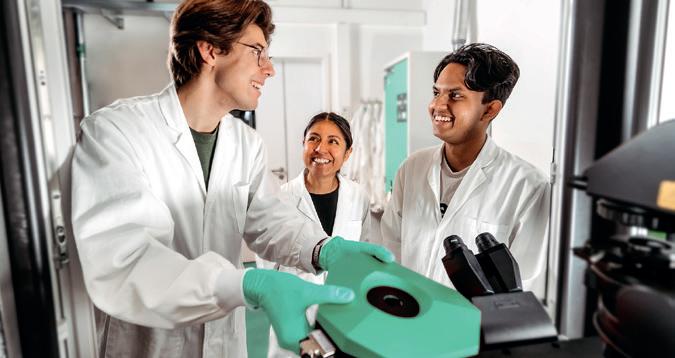
try gains direct access to cutting-edge research and infrastructure, while academic partners benefit from resources, co-mentoring, and translational opportunities.”
Two funding lines create opportunities for collaboration:
› Postdoctoral Translation Funding supports young scientists who combine academic excellence with industrial practice, guided by co-mentors from both sectors.
› Match-Making Funding enables joint projects between Alliance researchers and companies, with co-financing to ensure shared commitment.
Applications are reviewed quarterly, with the next deadline on January 15, 2026. Proposals are evaluated on sci-
entific excellence, innovation potential, feasibility, and industry commitment.
“The Alliance Industry Programme is more than funding – it’s a partnership model,” says Wolfgang Wick. “We want to foster collaborations that go beyond individual projects and create sustainable innovation in biotechnology and biomedicine.”
By linking science and industry, the Health + Life Science Alliance ensures that pioneering research evolves into real-world solutions, strengthening the region’s role as a leading hub for health and life sciences. ■
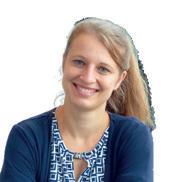
1. SYNTHETIC BIOLOGY
Prof Dr. Kerstin Göpfrich
Heidelberg University
Center for Molecular Biology of Heidelberg University (ZMBH)
Biophysical Engineering of Life Group

2. REGIONAL INNOVATIONS

Dr. Gitte Neubauer
CEO of Cellzome GmbH - GSK company
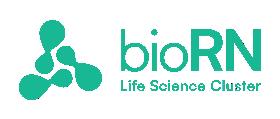

BioKryo. Fraunhofer IPA. Hummingbird Diagnostics: KnowledgeAgent. mfd diagnostics. Steinbrenner Laborsysteme. Gyros Protein Technologies. Qualitiy Assistance. more to come?
INTERNATIONAL INVESTOR PANEL